If you’re a photographer, you know the frustration. You’ve just finished a fantastic shoot, you sit down, excited to cull and edit, and then… the dreaded lag hits. Photoshop freezes. Lightroom takes five seconds just to render the next preview. Exporting a batch of high-resolution images feels like waiting for paint to dry.
I’ve been there. We invest thousands in high-end cameras and lenses, only to bottleneck our entire workflow with subpar computing power. The truth is, finding the best computer for photo editing isn’t about buying the most expensive machine; it’s about strategic component selection. We need a system optimized for the unique demands of raster and vector graphics, batch processing, and high-resolution files.
In this comprehensive guide, I’m going to walk you through exactly what specifications matter, why they matter, and how to build or buy the ultimate photography editing computer. Whether you’re looking for the absolute powerhouse or the best computer for photo editing on a budget, we’ve got you covered. Let’s dive deep into the hardware that will revolutionize your post-production workflow.
Contents
- 1 Why Your Current Computer Isn’t Cutting It: Understanding the Demands of Photography Editing
- 2 The Core Components: What Makes a Truly Great Photography Editing Computer?
- 3 The Crucial Peripherals: Beyond the Tower
- 4 Desktop vs. Laptop: Choosing Your Ideal Computer System for Photo Editing
- 5 Recommended Computer Systems for Photo Editing
- 6 Frequently Asked Questions About Photography Editing Computers
- 7 Final Edits: Finding Your Perfect Photography Editing Computer
Why Your Current Computer Isn’t Cutting It: Understanding the Demands of Photography Editing
Many people mistakenly believe that any modern computer can handle photo editing. While basic adjustments on JPEGs might be fine, professional photography involves massive files—we’re talking 45-megapixel RAW files, layered Photoshop documents (PSDs) that exceed 5GB, and complex mask calculations in Lightroom.
These tasks require instantaneous access to huge amounts of data and constant, intense mathematical calculations. Unlike gaming, which primarily stresses the GPU, professional image editing heavily relies on CPU single-core speed, and perhaps most crucially, massive amounts of fast RAM.
When you open a large PSD file with 50 layers, your computer needs to load all that data into active memory (RAM) so the CPU can manipulate it quickly. If you don’t have enough RAM, the system resorts to using slower storage (your hard drive) as a temporary scratch disk, leading to the crippling slowdowns we all dread. The goal is to find a good computer for photo editing that eliminates these bottlenecks entirely.
The Core Components: What Makes a Truly Great Photography Editing Computer?
To build the ultimate machine—whether it’s a sleek laptop or a robust desktop computer for photo editing—we must focus on four key areas: the processor (CPU), memory (RAM), graphics card (GPU), and storage (SSD/HDD).
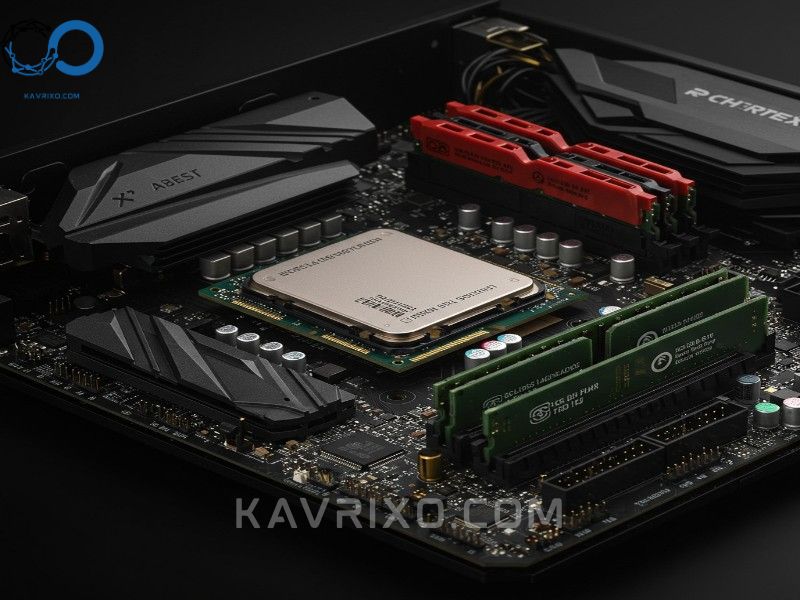
The Brains of the Operation: CPU (Processor)
The Central Processing Unit is the single most important component for rendering adjustments, running complex filters, and handling file exports.
Single-Core vs. Multi-Core Performance
For years, photo editing software, particularly Adobe Lightroom and Photoshop, relied heavily on single-core performance. This means the speed of one individual core was often more important than the total number of cores. However, modern versions of these programs, especially when handling tasks like AI masking, batch processing, and specific filters (e.g., Gaussian Blur, complex smart filters), are becoming increasingly multi-threaded.
- For Lightroom: High clock speed (GHz) is still king for general catalog browsing and basic edits.
- For Photoshop: More cores are beneficial when working with massive layered files and running operations in the background.
Our Recommendation: Aim for a modern processor (Intel Core i7/i9 or AMD Ryzen 7/9) with a high boost clock speed (ideally 4.5 GHz or higher) and at least 8 effective cores. This balances the need for fast single-core responsiveness with the multi-threaded power needed for heavy lifting. When choosing a best computer system for photo editing, never skimp on the CPU.
The Speed Demon: RAM (Memory)
If the CPU is the brain, RAM is the short-term memory desk. For professional photographers dealing with large RAW files (like those from medium format or high-megapixel full-frame cameras), 16GB is the bare minimum, and frankly, it often isn’t enough.
Why 32GB is the Sweet Spot for Image Editing
I strongly recommend 32GB of RAM as the optimal baseline for any serious photographer.
- Scratch Disk Management: When you open multiple high-resolution images, run numerous complex filters, or work with large PSDs, 32GB ensures the system can keep all necessary data in RAM, preventing the slow use of the scratch disk.
- Multitasking: If you edit photos while streaming music, browsing the web, or running a large file transfer, 16GB will quickly max out. 32GB allows for smooth multitasking, making your pc for photo editing feel snappy.
- Future-Proofing: If you also venture into video editing (even 1080p or 4K), 32GB becomes mandatory. If you are looking for the best computer for photo and video editing, you should realistically aim for 64GB.
Key Consideration: Ensure your RAM is fast (DDR4 3200MHz or DDR5 5200MHz+). Speed matters just as much as capacity for moving data quickly between the CPU and memory.
Graphics Power: GPU (Graphics Card)
While the CPU handles the heavy mathematical lifting, the GPU (Graphics Processing Unit) is becoming increasingly vital in modern photography software.
The Role of GPU Acceleration in Photo Editing
Adobe has integrated GPU acceleration into several key features:
- Real-time Previews: The GPU helps render complex filters, zoom, and panning instantaneously.
- AI Features: Features like Select Subject, Sky Replacement, and sophisticated noise reduction in Lightroom rely heavily on the GPU’s parallel processing capabilities.
- 4K/5K Monitor Support: If you’re running a high-resolution display (which you absolutely should be for color accuracy), the GPU ensures the operating system interface remains fluid.
Our Recommendation: You don’t need a top-of-the-line gaming card, but a dedicated GPU is necessary. Look for a modern card with at least 8GB of VRAM (Video RAM). The Nvidia RTX 4060 or AMD Radeon RX 7600 series offer an excellent balance of performance and price for a dedicated desktop pc for photo editing.
Storage Solutions: SSD vs. HDD
Speed is everything in post-production. Waiting for files to load or applications to open eats into your billable hours. This is where solid-state drives (SSDs) come in.
The NVMe Advantage for Speed
In the past, we debated SSDs vs. HDDs. Today, the debate is between different types of SSDs.
- Primary Drive (Operating System & Applications): This must be an M.2 NVMe SSD. These drives connect directly to the motherboard via the PCIe lanes, offering speeds up to 10x faster than traditional SATA SSDs. Installing Windows, Lightroom, and Photoshop on an NVMe drive ensures lightning-fast boot times and near-instant application loading. This is non-negotiable for the best computer for image editing.
- Active Projects Drive (Scratch Disk/Current Work): Use a second, high-capacity SATA SSD (1TB or 2TB) for your current projects and as your Photoshop scratch disk. This keeps your active work isolated from your operating system, optimizing performance.
- Archive Storage: Traditional Hard Disk Drives (HDDs) are still valuable for long-term, cold storage of completed projects and backups where speed isn’t critical.
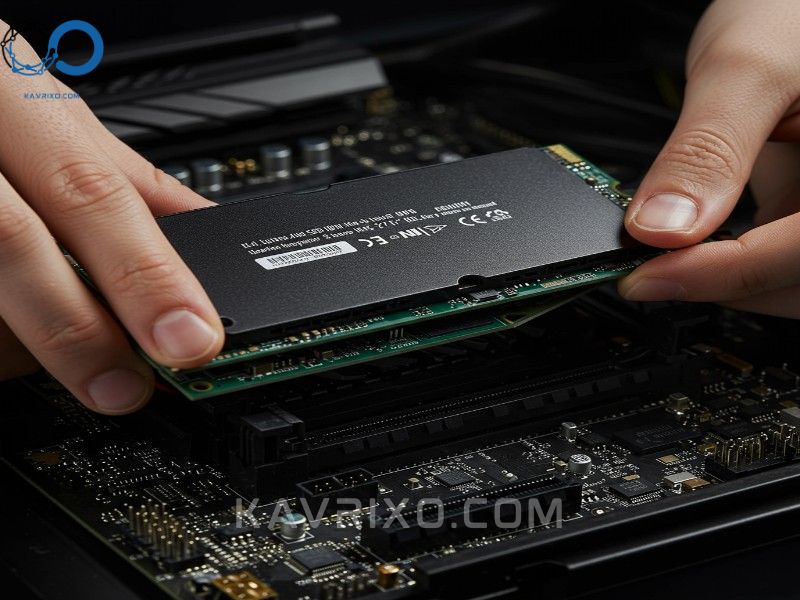
The Crucial Peripherals: Beyond the Tower
We often get so focused on the internal specs of the pc for photo editing that we forget the crucial link between the computer and our eyes: the monitor.
The Visual Gateway: Choosing the Right Monitor
A powerful computer is useless if your monitor displays inaccurate colors. If you edit on a screen that is oversaturated or too dark, your prints and client deliveries will look completely wrong.
Key Monitor Specifications for Photographers
- Color Gamut Coverage: Look for 100% sRGB coverage and high coverage of the Adobe RGB color space (ideally 95% or higher) if you plan on printing professional quality work.
- Panel Technology: IPS (In-Plane Switching) panels offer the best color accuracy and viewing angles, making them the standard for photo work.
- Resolution and Size: I recommend 27 inches as the minimum size, paired with 4K resolution (or at least 1440p) to give you the screen real estate needed to manage panels and view high-resolution images clearly.
- Matte Finish: A matte finish helps reduce reflections, which is crucial for consistent color perception.
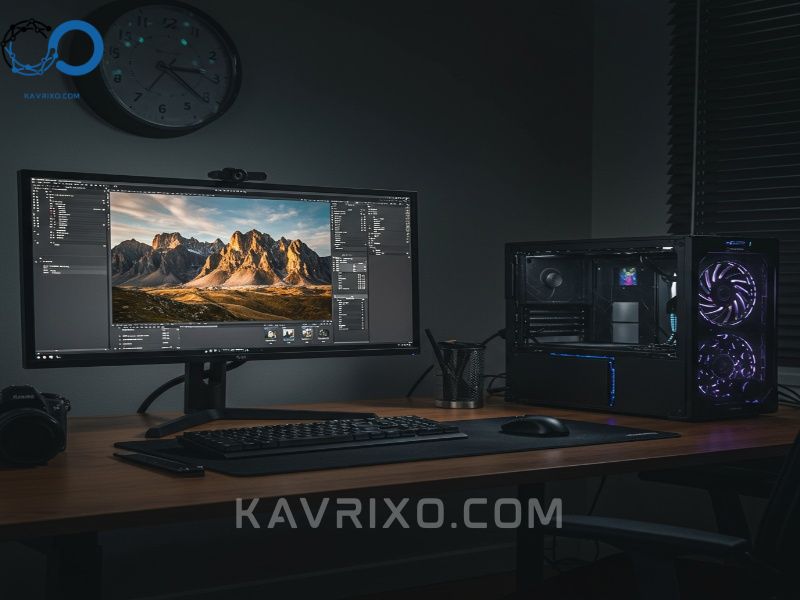
Color Accuracy: Calibration Tools
No monitor is perfectly accurate straight out of the box. A vital component of any best computer system for photo editing setup is a color calibration device (like a Datacolor Spyder or X-Rite i1 Display). These devices create a custom color profile for your specific monitor and environment, ensuring that the colors you see on screen are the colors that will appear in print or on other calibrated displays.
Desktop vs. Laptop: Choosing Your Ideal Computer System for Photo Editing
This is perhaps the biggest decision when searching for the best computer for photography editing. Both desktops and laptops have merits, but for pure performance and longevity, one clearly wins.
Why We Recommend a Desktop Computer for Photo Editing
If your work happens primarily in one location (a home office or studio), a dedicated desktop reigns supreme.
- Value and Power: For the same budget, a desktop computer for photo editing will offer significantly more power than a laptop. Desktop components run cooler and are less constrained by size, meaning they can sustain peak performance for longer export jobs.
- Upgradability: Desktops offer unparalleled upgradability. If you need more RAM, a faster GPU, or additional storage in three years, you can simply open the case and plug it in. This makes the initial investment in a good pc for photo editing last much longer.
- Ergonomics: You can pair a desktop with a perfect, calibrated monitor, a comfortable keyboard, and an ergonomic mouse setup—essential for long hours of post-production.
When a Laptop is the Best Choice for Photography
Laptops are the obvious choice for the photographer who is constantly on the move—the travel, wedding, or event shooter who needs to cull and edit immediately after a job.
- Portability: Nothing beats the ability to edit high-resolution files on a plane or in a hotel room.
- Modern Power: Modern high-end laptops (like the Apple MacBook Pro or high-end Windows mobile workstations) offer incredible performance, often rivaling mid-range desktops. However, they come at a significant price premium, especially when configured with 32GB or more RAM.
If portability is paramount, look for a laptop with a high-quality, factory-calibrated display (often 100% P3 or Adobe RGB) and at least 32GB of unified memory. If you are specifically looking for the best computer for photography and video editing on the go, 64GB of RAM is worth the splurge.
Recommended Computer Systems for Photo Editing
Now that we understand the components, let’s look at specific configuration tiers. These recommendations are designed to help you find the best computer for picture editing based on your workflow and financial flexibility.
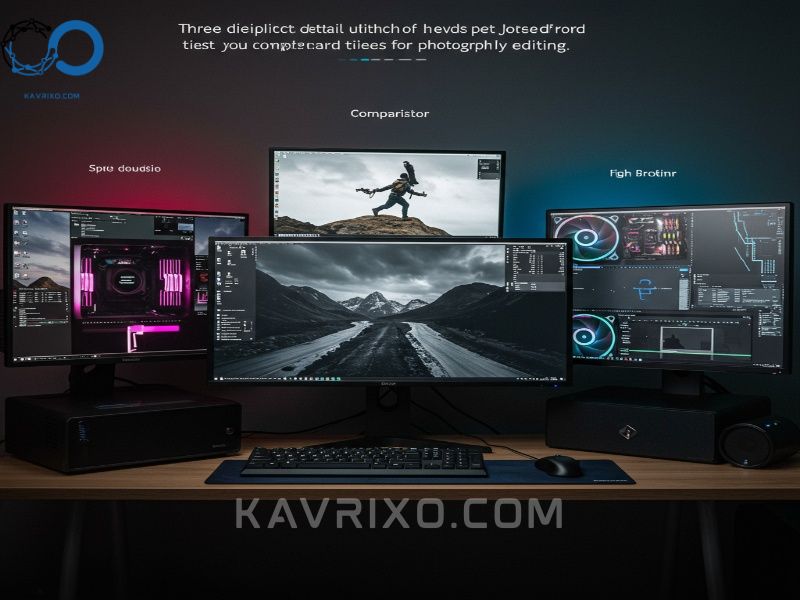
Tier 1: The Budget-Conscious Photographer (Best Computer for Photo Editing on a Budget)
This setup is ideal for hobbyists, students, or those working primarily with JPEGs or modest resolution RAW files (under 30MP) who need a functional, responsive system without breaking the bank.
| Component | Minimum Specification | Rationale |
|---|---|---|
| CPU | Intel Core i5 (13th/14th Gen) or AMD Ryzen 5 (7000 Series) | Good single-core speed for Lightroom responsiveness. |
| RAM | 16GB DDR4/DDR5 (3200MHz+) | Adequate for single-image edits and basic multitasking. |
| GPU | Integrated Graphics (Intel Arc or AMD Radeon) or basic dedicated card (4GB VRAM) | Handles display output and basic GPU acceleration. |
| Storage | 500GB NVMe SSD (Primary) + 1TB HDD (Storage) | Fast boot and application loading, cheap bulk storage. |
| Monitor | 24-27 inch, 1080p or 1440p IPS, 100% sRGB | Decent color representation for entry-level work. |
This configuration provides a surprisingly good computer for photography given the price point, focusing critical funds on the fastest possible primary SSD and decent RAM.
Tier 2: The Enthusiast and Professional (The Recommended Computer for Photography Editing)
This is the sweet spot for the working professional who handles client work, large batches of high-resolution images (40MP+), and occasional layered retouching. This is what I consider the true best computer for photographers.
| Component | Recommended Specification | Rationale |
|---|---|---|
| CPU | Intel Core i7 (Latest Gen) or AMD Ryzen 7 (7000/8000 Series) | Excellent blend of high clock speed and multiple cores for complex exports. |
| RAM | 32GB DDR5 (6000MHz+) | Essential for smooth workflow with large layered PSDs and multitasking. |
| GPU | Nvidia RTX 4060 or AMD Radeon RX 7600 (8GB VRAM) | Optimal acceleration for AI features and 4K display support. |
| Storage | 1TB NVMe SSD (Primary) + 2TB SATA SSD (Active Projects/Scratch Disk) | Separates OS from active work for maximum speed. |
| Monitor | 27-32 inch 4K IPS, 95%+ Adobe RGB coverage | Critical for precise color grading and print preparation. |
If you are serious about editing and need reliability and speed, this photography editing computer configuration will serve you exceptionally well for many years.
Tier 3: The Powerhouse (Best Computer for Photo and Video Editing)
This configuration is aimed at those who combine high-end photography (80MP+ medium format or massive panoramas) with serious video work (4K/6K editing, effects, and color grading). If you need the best computer for pictures and motion graphics, this is your zone.
| Component | Elite Specification | Rationale |
|---|---|---|
| CPU | Intel Core i9 (Latest Gen) or AMD Ryzen 9 (High Core Count) | Maximum multi-threaded performance for video rendering and batch processing. |
| RAM | 64GB DDR5 (High Speed) | Necessary for simultaneous high-resolution video and complex layered photo projects. |
| GPU | Nvidia RTX 4070/4080 or equivalent (12GB+ VRAM) | Accelerated video encoding (Nvidia NVENC) and real-time 4K/6K playback. |
| Storage | 2TB Gen4 NVMe (OS/Apps) + 4TB Gen4 NVMe (Active Projects/Scratch) | Unmatched data transfer speeds for massive files. |
| Monitor | Dual 32-inch 4K IPS Monitors (Hardware Calibratable) | Maximum screen real estate for intricate editing and timeline management. |
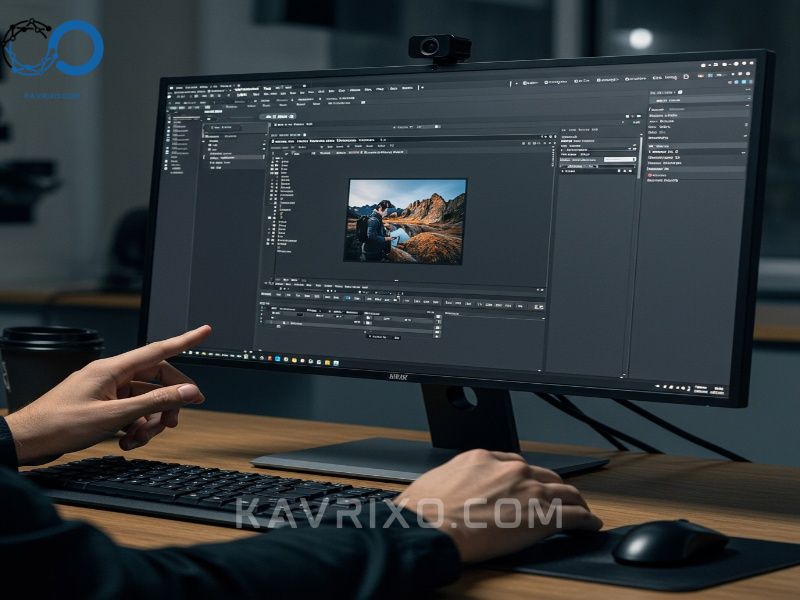
Read more: Finding the Best Budget Laptop for Video Editing: Your Comprehensive Guide to Affordable Power
Frequently Asked Questions About Photography Editing Computers
Do I really need 32GB of RAM for photo editing?
While you can technically start editing with 16GB, I highly recommend 32GB. If you work with files over 50 megapixels, use multiple layers in Photoshop, or run Chrome while editing, 16GB will cause lag. Upgrading to 32GB is often the single most impactful upgrade you can make to an existing computer for photo editing. It transforms the experience from sluggish to seamless.
Mac vs. PC: Which is the best computer for photography?
Historically, Mac dominated the creative space, but today, it’s about ecosystem preference and budget. Apple’s M-series chips offer incredible efficiency and performance, particularly in laptops (MacBook Pro), making them fantastic good computers for photo and video editing. However, a custom-built Windows desktop for photo editing offers superior power-per-dollar, better upgradability, and a wider range of component choices. Both operating systems run Adobe software flawlessly today.
Should I prioritize the CPU or the GPU for photography editing?
For pure photography (Lightroom and Photoshop), you should prioritize the CPU and RAM first. The CPU dictates how fast edits are rendered and how quickly files are exported. The GPU is important for real-time visual feedback and specialized AI features, but the CPU handles the fundamental computational work. If you plan on doing serious video editing, the GPU priority shifts upward, making the choice of the best computer for photography and video editing more complex and expensive.
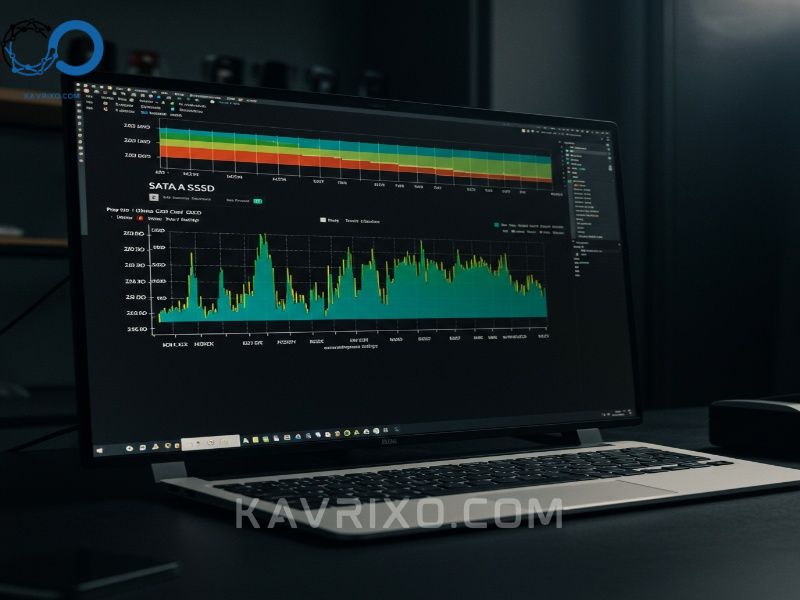
Final Edits: Finding Your Perfect Photography Editing Computer
Choosing the best computer for photo editing is an investment in your productivity and your sanity. By focusing on high clock speed CPUs, generous amounts of fast RAM (32GB minimum), and lightning-fast NVMe storage, you can build a system that not only keeps up with your creativity but actively enhances it.
Whether you opt for the customizability of a powerful desktop or the portability of a cutting-edge laptop, remember that the goal is seamless workflow. Say goodbye to the spinning beach ball and hello to instantaneous edits. Take the time to select the right components for your specific workload, and you will reap the rewards for years to come. Happy editing!
